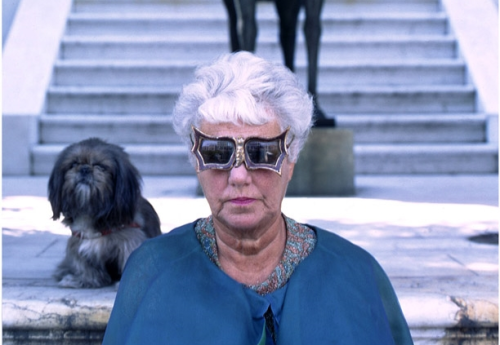

Last week was Peggy Guggenheim’s birthday, which elicited numerous posts about her online. It prompted me to re-watch Lisa Immordino Vreeland’s fascinating documentary Peggy Guggenheim: Art Addict (2015), which is available for viewing on Amazon Prime.
The film benefits from a long-lost taped interview with her that was discovered in a basement. Guggenheim’s life, as she acknowledges, was full of tragedy, starting with the fact that her father, Benjamin—who was less rich than her uncles—died on the Titanic. Her two children, Sindbad and Pegeen, comprise another heartbreaking story.
Peggy, who moved to Paris in 1920 to live a bohemian life, was considered the outcast in a very wealthy family. Some male informants offer what sound like sexist assessments, such as emphasizing her lack of formal training in art. She essentially learned about art from hanging around artists—what better way—and credits Marcel Duchamp with being her mentor. After World War 2, she was married to Max Ernst and became a patron of Jackson Pollock.
Peggy Guggenheim was often disparaged during her lifetime as an intellectual lightweight and a dilettante, as well as by the double standard of having many lovers. Yet, in many ways, Guggenheim outsmarted the critics and professional curators who didn’t take her seriously by opening major galleries in London and New York (the famed experimental The Art of This Century Gallery), a museum in Venice, and eventually leaving her collection to her uncle’s museum in New York, which she humorously likens to a circular garage.
Her responses to questions about both her life and art are extremely brief but disarmingly honest, contributing to a remarkable portrait that gives viewers an appreciation of her significant contribution in shaping the art of the 20th century.